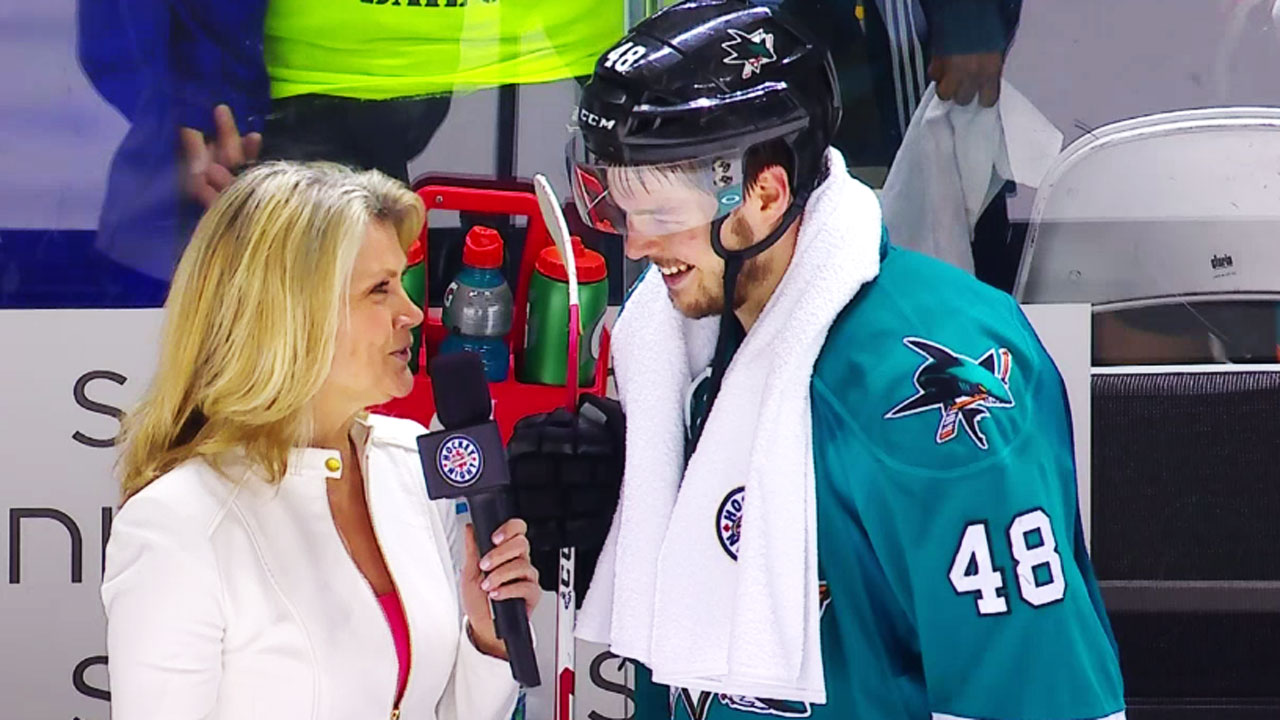As a male, it’s impossible to understand the challenges of navigating the sports media world as a female.
In conjunction with International Women’s Day, I reached out to some established female sports journalists to get their perspective on the complexities of working in this industry.
With #MeToo tales of sexual harassment dominating the news, working on this story I also anecdotally encountered stories of micro-agressions such as mansplaining and coded language, to go along with more direct romantic advances in professional settings that constitute sexist treatment on the job. This roundtable is an attempt to address the systemic challenges that women deal with covering professional sports. The panelists were told they could pass on answering any questions and their responses could be as short or as long as they desired.
The Panelists:
Laura Armstrong is a graduate of University of King’s College with a bachelor’s degree and combined honours in journalism and English. She is currently a beat reporter covering Major League Baseball and Major League Soccer for the Toronto Star.
Rachel Brady has a journalism degree from Carleton University and a masters in sport and recreation administration from the University of New Brunswick. She’s written for The Globe and Mail since 2011. Before that she has worked as a multimedia producer in Michigan, before returning to Canada in 2008 to cover the Vancouver Olympics for Canada’s Olympic Broadcast Consortium.
Christine Simpson is an alum of The University of Western Ontario and previously worked as a rinkside reporter for National Hockey League broadcasts in the United States with ABC, ESPN and NBCSN. She’s currently a reporter covering hockey for Sportsnet on Hockey Night in Canada.
Here are their stories.
Sportsnet: How has the role of the female sports journalist changed throughout your career?
Laura Armstrong: It feels like it hasn’t much – mostly because I’ve only been in this job for less than three years. But women in every industry are pushing for more; more respect, more responsibility, more credit, more money. I think we’ve seen that in the sports world, too. On the print side of Toronto sports media, for example, there have been more female sports editors in my short career that male sports editors. Getting the chance to work for and learn from strong, smart women who earned their way into those positions of power is something I’ve probably taken for granted over my time, because it certainly wasn’t the case for all of the female sports reporters that came before me.
Christine Simpson: I’m not entirely sure if the role itself has changed. I would just say that there are many more women covering sports than when I first got into the business in 1998. So, while we may have been an oddity back then, we are now becoming more the norm.
—
Sportsnet: What is the toughest part of cracking the old boys club historically associated with sports?
Laura Armstrong: I consider myself very sheltered in the sense that I work with a group of both male and female colleagues that have been nothing but welcoming to me since I started in this industry. Personally, I’d prefer my gender be forgotten than highlighted; I’d like to be treated in the same manner as any of my male colleagues. That’s not always easy to do, though; you sort of stick out like a sore thumb when you’re one of only a couple of women in a scrum of dozens of reporters.
Rachel Brady: I grew up playing and watching sports all the time and could talk about it with boys and male family members, so I always felt comfortable holding my own when I got into covering sports as a career. I always felt I belonged and understood as well as any other reporters. But when I first began in 2000, I was covering college basketball at The University of Michigan in Ann Arbor and it was customary that a media relations staffer would always holler out: “Woman in the locker room” as the few female reporters would enter the men’s team locker room. That was a signal to make sure all players were aware a woman was present in their space. It was slightly embarrassing for the women entering as it singled us out, but I got to the point where I hardly noticed it anymore.
The thing I have found most is that there is a sense in many places that players and coaches need to alter their language or behaviour if women are present. As female reporters, we want to be privy to everything that can be said around male reporters, and yes, even the foul language. We don’t need a softer, simpler version of the facts relayed to us. Our ears are no more delicate than those of male reporters. We want to be treated respectfully, as anyone would, but I don’t like to have my intelligence, capability or toughness underestimated.
—
Sportsnet: Has the #MeToo conversation changed the landscape for female sports journalists?
Laura Armstrong: I think it’s starting to. I’ve noticed many of my male colleagues – the vast majority of whom are never inappropriate to begin with – are far more aware of their words and actions than before. It’s an important step.
Rachel Brady: It has been a big topic among some of us and has caused many of us to scrutinize our past experiences and regret that we didn’t speak up in certain past situations. It immediately had me flashing back to a very lewd comment made to me during a large dinner with several reporters on a road trip one time. I rolled my eyes disapprovingly at the reporter from a competing media outlet when he said it, but today I wish I’d asked him to repeat it louder so the whole table could hear it, so I could point out how offensive and unacceptable it was. Women speaking out in the #MeToo movement have experienced far more than I ever have, and it has put me on high alert to say something next time I notice anything.
Christine Simpson: The #MeToo conversation has changed the landscape for women across the board. Bad behaviour, pay inequality, workplace harassment, diversity – all of these issues are coming to the forefront and forcing many industries to take a closer look at how all of their employees are treated. And for us in television, how the diversity of our society is reflected in our broadcasts.
—
Sportsnet: Why is it important to tell female stories in sports?
Laura Armstrong: There are so many great stories to tell and we’re always looking for the best story of the day, week, month or year so why let that be dictated by gender? We also know that young girls benefit from playing sports and I think it’s our responsibility to give them women to look up to – whether it’s on the field or the court or the diamond or behind the scenes.
Rachel Brady: Sports journalism today reaches far beyond men’s major pro sports leagues. Females make up half of society – why would we not be telling their stories too? Females consume sports media in growing numbers and are shareholders in the household decisions about how their money is spent and what activities their children take up. They play sports, they attend sports, they purchase equipment and merchandise. They are working in pro sports in growing numbers and making endorsement dollars as athletes. More reporters should branch out and spend more of their time on stories about women. Covering female athletes most of the year should not just be directed to the females on staff.
—
Sportsnet: Why is it important to have female storytellers in sports?
Laura Armstrong: Like anything, women and men look at things from different perspectives. In journalism, we’re always looking to gather as many perspectives as possible to properly represent our readership. Women make up roughly half the population, so why would we leave that demographic out?
Rachel Brady: It’s important to have women doing all kinds of jobs across all industries. Once women start to break in, it’s easier for others to follow.
—
Sportsnet: Is there a female journalist who inspired you?
Laura Armstrong: Do you have some time? Because the list is long. We’re so lucky in Toronto to have a strong contingent of female sports reporters – on my beats, Hazel Mae, Melissa Cuoto from the Canadian Press, etc. At the Star in particular, I come behind Alison Gordon, Rosie DiManno, Mary Ormsby – women who have helped shape our sports section into what it is today. I was especially lucky to be hired by, and work closely with, the Star’s former sports editor Jennifer Quinn, who is a boss in every sense of the word – which in my books, is the best compliment I can give.
Rachel Brady: I heard Lesley Visser speak at a sports journalism conference in Kentucky when I was a student, and it gave me an appreciation for what women went through to get locker room access. Then when I started out in Detroit, Jennifer Hammond from Fox Sports Detroit was already very established and respected within the market, especially among NFL media. I looked up to her and watched the way she established very professional relationships with coaches, players and athletes, and how she studied up on the game and was utilized on panels.
I also sought the advice of long-time Detroit News college football writer Angelique Chengelis back then. I was a producer back then and I asked her to read some of my freelance writing, and she critiqued it and encouraged me that feature writing was my path. She was great at questioning coaches who had strong, commanding personalities.
—
Sportsnet: What advice would you give aspiring female journalists?
Laura Armstrong: Don’t let your gender get in the way. Be proud of being a woman – I am! – but don’t get caught up in the idea that sports is an old boys club. I worry that women worry about sticking out in this industry so they don’t apply. That would be a shame.
—
Sportsnet: If there is one thing you would do to change the industry to make it safe and equal for woman what would it be?
Laura Armstrong: Bring more women in. There’s strength – and comfort – in numbers. That, in my opinion, is where we start.
Christine Simpson: I would hope that there will come a time when we have more women in management positions at our networks. If the ones with power who are making the decisions at the top have a better understanding of the people they are in charge of and the challenges they face, it can only help to make female employees more comfortable in approaching them when they have been unfairly treated.










